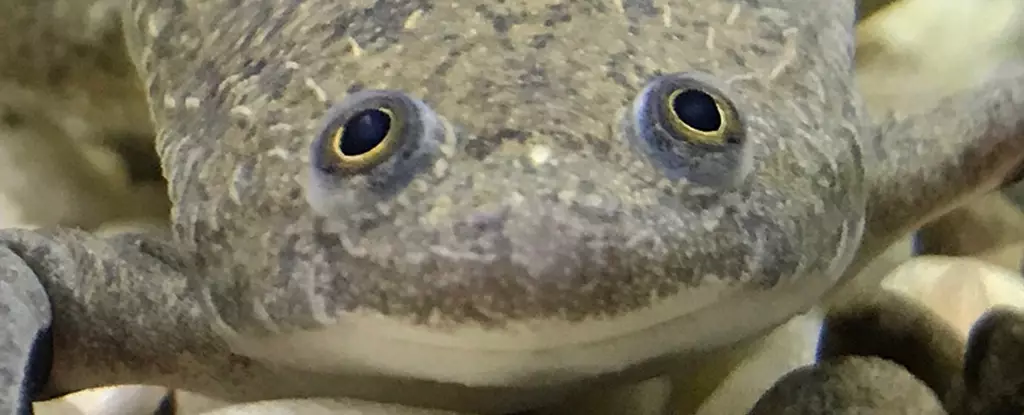Frogs, despite being a hairless species, have provided scientists with valuable insights into the origins of mammalian hair. A recent study conducted by Ghent University molecular biologist Marjolein Carron and her team focused on the tropical clawed frog (Xenopus tropicalis) to understand the genetic similarities between frog claws and mammalian hair. While frogs do not possess hair, they share genes involved in the production of keratin-like molecules, which are essential components of both nails and hair.
One of the key genes involved in the development of hair and nails is Hoxc13. Mutations in this gene can lead to defects in the growth of hair and nails in humans. Interestingly, the study found that by switching off the Hoxc13 gene in clawed frogs, researchers were able to block the formation of claws. This suggests that the genetic foundation for hair may have been established in the common ancestor of frogs and mammals.
The presence of the Hoxc13 gene in the last common ancestor of all jawed vertebrates indicates its crucial role in the evolution of skin appendages. In ancient lobe-finned fish, which are considered our pre-land ancestors, the gene was involved in the development of paired fins, which later evolved into tetrapod legs. The researchers speculate that hardened skin initially appeared to protect the tips of early land-legs from wear and tear, eventually leading to the development of claws, nails, and hair for various functions such as digging, hunting, and self-defense.
The study suggests that the original function of keratin molecules in primitive vertebrates was for the development of claws, nails, and toe pads. Over time, these molecules evolved to form hair in mammals. The exact mechanism of this transition from claws to hair follicles remains unknown, but researchers believe that the Hoxc13 gene played a crucial role in this process. It is still unclear whether this gene is also involved in the control of feather development in birds.
Skin appendages such as claws, nails, and hair continue to regenerate throughout an organism’s life to compensate for damage caused by environmental factors. This regenerative capacity is crucial for the survival of species, allowing them to adapt to changing conditions and maintain their ability to interact with their surroundings effectively.
Studying the genetic similarities between frogs and mammals has provided valuable insights into the evolutionary origins of hair. The research highlights the importance of key genes like Hoxc13 in the development of skin appendages and sheds light on how these structures have evolved over millions of years. Further studies are needed to fully understand the complex mechanisms that govern the development and maintenance of hair in mammals.


Leave a Reply